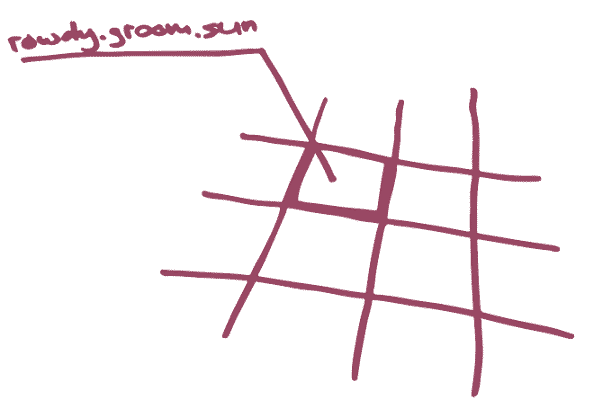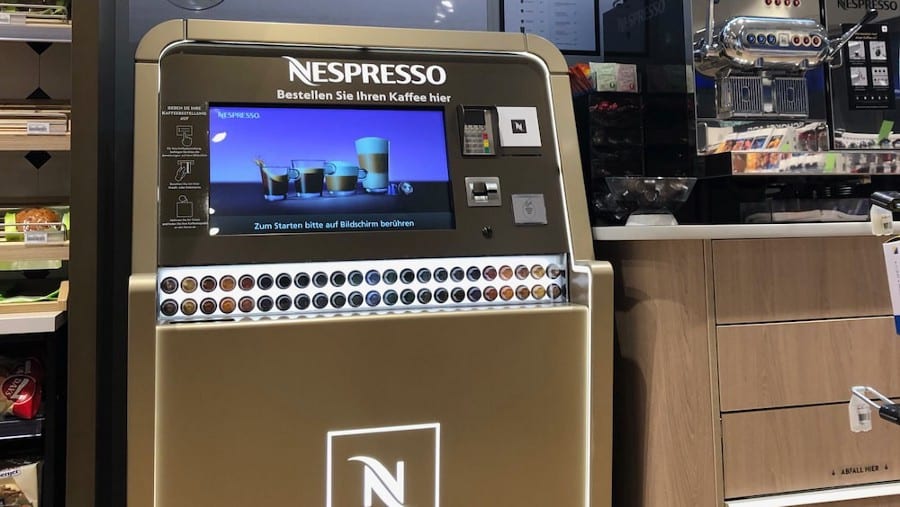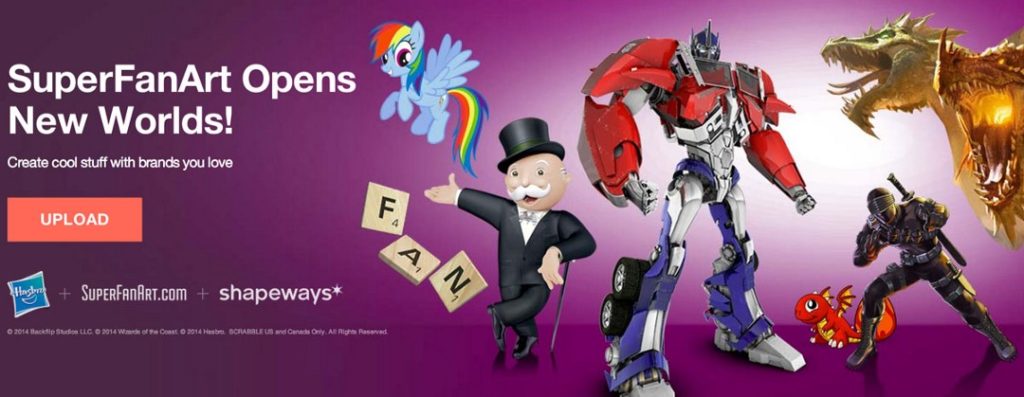7 Successful Business Pivot Examples

Hindsight is a gift. Let’s unpack a few bold decisions made by companies to either completely re-invent or shift their business model.
Business Models are always subject to change, but as start-up culture has risen to prominence and the lingo entered the business world, one term has been particularly popular: The Pivot.
Pivoting means to shift an essential part of your business strategy — either in regard to a product or the business model. This often includes drastically changing parts of the company.
For an established player to pivot is a very different thing compared to a startup still trying to find a working model, perhaps even the actual product. For most start-ups, pivoting is part of the process.
For our purposes, we’ll think of Pivots in a broader sense. In order to do so, we want to look at examples from start-ups and larger companies to see what business model change can look like in practice:
1. What3Words
The London start-up has divided the world into 3x3m squares and named all 57tn of them with three words to identify them individually. This allows for quick and easy sharing of a very specific location. For example, instead of meeting somebody “somewhere in Bryant Park”, the three words splash.bonus.lonely would lead to the actual bench you are waiting on. Couriers don’t have to read special instructions to find a side entrance.

To say that What3Words pivoted might be slightly exaggerated, but it did learn quite a lot about a simple idea having very different markets in different regions that can work as a catalyst.
In Mongolia, where there are places with no actual the postal addresses and a large number of the population are nomadic, the national addressing standard runs on What3Words. In Germany, where finding an address is not that much of a pain point, they have achieved a milestone with Daimler investing in the company and Mercedes-Benz integrating the address system into their cars, recognizing that entering addresses into a navigation system in a car is anything but smooth.
All the while, in its native UK, What3Words hadn’t caught on in a big way until it focused on emergency services. The result was a hugely successful PR campaign, with headlines like “The App that can save your life” on BBC News paving the way to much wider adoption.
Especially big ideas will have different journeys in different markets whose needs might differ greatly.
2. Nespresso
Nespresso was a brand built around exclusivity. The “Ultimate Coffee Experience” was only available in selected stores or of course their own boutiques, where coffee pods were presented like jewelry. Signing up to the Nespresso Club is part of the unpacking ceremony.

Nespresso hasn’t abandoned its strategy to sell a high-end coffee experience, but as compatible capsules are available in every store, Nespresso seems to be keen to simplify the buying experience in certain markets. In Switzerland, the pods will be available at newsstands at train stations, even via a self-serve counter. The move is a clear break with the distribution model they have pursued so far.

Nespresso has been careful not to dilute the strong brand, but they also know that every part of a brand’s business model, especially one as successful as theirs, needs to evolve to keep customers loyal: what brought you here doesn’t necessarily get you there.
3. Microsoft
Change is harder for big companies with an already working model already and not many are bigger than Microsoft.
Over the last decade, Microsoft’s journey (maybe because of its reluctance) has been a great case study illustrating how the software and hardware business has evolved.
Under Steve Ballmer, the company completely missed the smartphone revolution. In an interview in 2014, Ballmer acknowledged this, but he also made the point how hard it was to change the mindset inside Microsoft: “When the name of your company is Microsoft and your formula works… Our Formula was working! […] We were software guys.” The big transformation in his eyes was the Surface, the first high-end hardware device and he calls the transformation an almost religious one.
To envoke the term “religious” is the giveaway there. In terms of describing a culture that is resistant to change, that is as resistant as it gets.
Taking over from Ballmer in 2014, Satya Nadella has changed Microsoft again. He saw the future in cloud services and a mobile-first approach. Nadella made it his mission to transform Microsoft’s relationship with the market and its place in it. In his first public appearance, he never mentioned Windows once. While it wasn’t commented on widely at the time, it represented a huge shift. Microsoft had been a company that was centered around that one product: Windows. But the days of locking customers into the Microsoft ecosystem were over. Collaboration with other platforms and partners and open APIs started becoming possible.

Nadella is widely credited as the main reason behind Microsoft’s growth and culture change.
Nadella gave Microsoft a new purpose: to empower every person and every organization on the planet to achieve more.
Other than pushing a product, the question for companies needs to be: What are our customer’s expectations of us? How have their expectations changed and are we still helping them to achieve their goals?

The Future of L&D
Discover post-pandemic workplace dynamics, AI’s impact on Learning & Development and how L&D can nurture learning communities.
4. Slack
Stewart Butterfield built Slack out of a gaming company called Tiny Speck. During game development, the company had created a collaboration tool to improve the productivity of their ever-growing team across the country. When it became clear that Tiny Speck was not living up to expectations, Butterfield used the rest of the VC money to completely Pivot and try to make their internal collaboration tool the main product.
Friends in other companies were invited to try Slack and it caught on, eventually becoming the fastest-growing company of all time.
This is a very successful Pivot story. One could argue that when the complete shutdown of a company is all but certain, the opportunity cost of starting completely fresh is relatively low. However, it still needed people to recognize the innovation that was going on in an area of the company that was not part of their value proposition or purpose.
Finding innovative projects inside the company that are contributing value and growth can lead to new business models inside a company.
As we optimize our own processes and operations, are we hitting on something that could be of value to the market?
6. Hasbro
Over the last decade, the historical toy manufacturer has shown itself to be very able to experiment and make some brave decisions.
As early as 2013, the company has gone into a partnership with 3D Systems in order to allow people to create and print their own toys at home.

At a time where, admittedly, 3D printing wasn’t accessible enough to become a real disruptor for toy manufacturers, Hasbro has ventured out into the maker communities like SuperFanArt at a time when big companies hadn’t quite caught on to the power of fan communities yet.
Another initiative, Spark Hasbro, encourages people to submit their ideas to Hasbro with a chance to see their idea or design produced.
In all of this, however, the most significant shift has been the change from being a manufacturer to being an entertainment company. In 2017, Hasbro started producing animated films (My Little Pony) through their animation studio All Spark. Instead of licensing brands, Hasbro is all about creating new IP.
The company has also ventured into publishing this year. Instead of selling toys, Hasbro is bringing out a new children’s book set in “Cubby Hill”, developing a brand as a book series before releasing merchandise.

Branded products have always been a competitive market and licensing intellectual property is expensive. Knowing that IP is a powerful growth generator, Hasbro is going from being a manufacturing company to a global “play and entertainment company”.
Creating characters and stories for their customers is also a form of talking directly to the customer base. The demise of Toys’R’Us has shown how important it is for a company to build a direct relationship with their customer. Hasbro is almost a hundred years old. Most of that time it spent separated from the customer by the retailer.
Global CHRO Johnson said in an interview: “We must continue to think of ourselves as a learning company and challenge the way we think about everything.”
7. YouTube
We close with a classic start-up story. Maybe outshined by the oscar-winning retelling of Facebook’s origin story in “The Network”, YouTube’s start as a dating website is less well known. Looking at what it has become, it is strange to think that the people behind one of the first video sharing platforms didn’t see the potential beyond dating right away. The first YouTube slogan was “Tune in, hook up.”

Nobody then could predict that the video platform could change the media landscape forever, becoming the most global powerhouse for user-generated content, turning a whole generation into filmmakers, editors, and influencers in the process.
YouTube scrapped its whole value proposition and let the users decide how they were going to use the platform. What if you gave your resources and capabilities into the hands of your customer? What would they do with it?
Author
Subscribe to get Access to Exclusive Content





